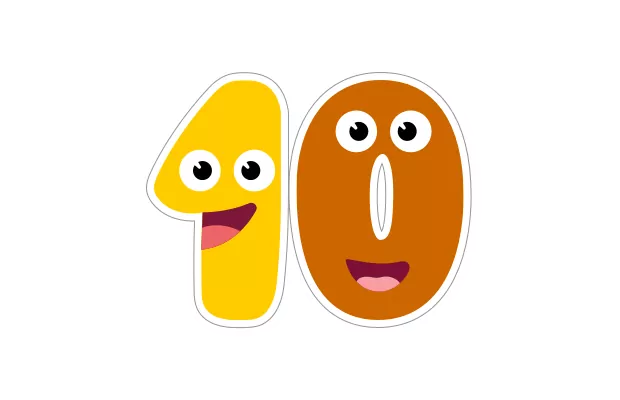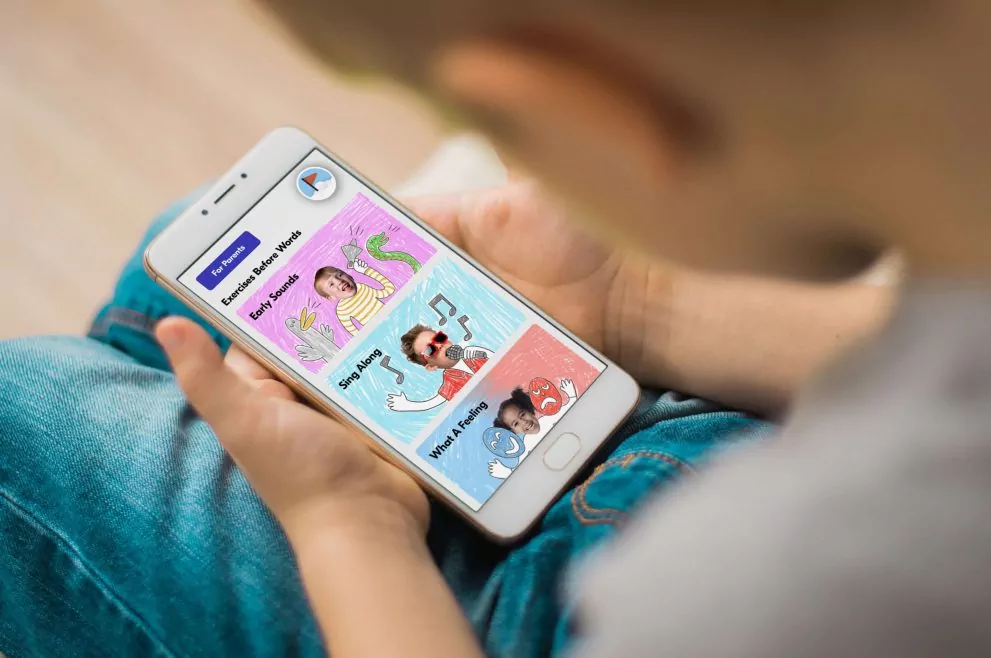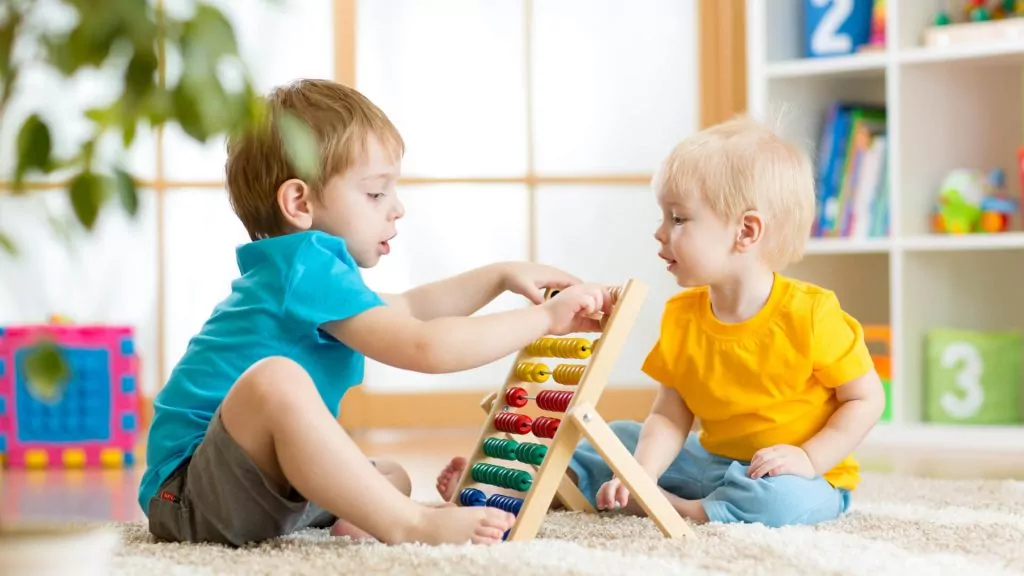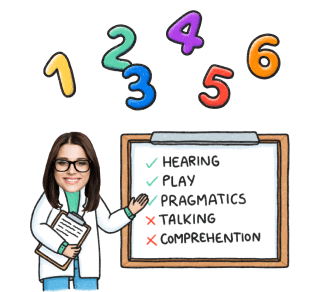When Do Kids Start Counting to 10?
Oct 17, 2024 Counting to 10 is a major developmental milestone to which many parents look forward. But, at what point should your child start to learn numbers, and when should they be able to count to 10?
In This Article
When Should My Toddler Learn to Count to 10?
Math is all around us and from the moment children start exploring the world, they are learning. Whether they are identifying shapes, recognizing patterns, or predicting events, these are all mathematical concepts that develop as a child ages. But, at what age do children start to understand numbers?
The truth is, children will recite numbers before they actually understand the concept behind them. Though every child is different, most toddlers will be able to count to 10 by the time they are two-years-old. At this point in time they are probably repeating them mostly by memory and have yet to understand what they actually mean.
This concept is known as “rote” counting. Rote counting is when a child can say numbers in order, and is mostly learned through hearing the numbers repeatedly said out loud by others.
Do you feel like your child should be counting by now?
Take this free cutting-edge 3-minute quiz. You will find out if your child is on track with his milestones and receive a free report with a personalized plan of learning. Speech Blubs is full of activities to encourage speech development!
When rote counting to 10, children may be able to cite numbers in order or may jump from number to number randomly. The more they hear others count, the more confident they will become in reciting the proper number orders.
Note: Don’t panic if your child is not able to count to 10 by the time they are 2-years-old. This is the average age that children learn to count, but is by no means definitive.
All children learn at their own pace and some will learn more quickly than others. You can help your child learn numbers by working with them on a regular basis and engaging in toddler math activities.

When Do Children Understand Basic Math Concepts?
We mentioned above that even though most toddlers can cite their numbers by 2, they don’t necessarily understand the concept behind them. Children don’t actually start to understand the concepts of counting until between 2-4 years of age.
The first sign that your child is starting to understand the concept behind numbers is with a skill known as one-to-one correspondence. You will often see this during playtime. One-to-one correspondence is when children start to group objects, pointing to each one as they count them. Again, this math skill is often learned by copying others.
The next stage is understanding what these numbers represent. For example, if you count “one,” “two,” “three” cars, then there are three cars total in that group.
Once children start to understand this concept, the next stage is pairing numbers with their written numerals. Most children can start to understand this pairing by their preschool years, or 3-4 years of age.
Other mathematical concepts that are usually developed by the preschool years include the ability to recognize shapes, use classifications (height, size, etc.), use spatial awareness for puzzles, and start predicting cause and effect relationships.
9 Early Math Games for Kids Learning to Count to 10
Here are some early math games for kids that you can do with your toddler to help them learn numbers and to count to 10:
1. Speech Blubs’ “Awesome Numbers” and “Numbers and Me” section
Speech Blubs is an award-winning speech therapy and vocabulary-building app that helps toddlers and young children grow their vocabulary and nurture their speech. All children can play and learn with it, including those at a “typical” developmental level, and those with developmental speech delays due to conditions like autism or other learning disabilities.
The educational ‘Awesome Numbers’ and ‘Numbers and Me’ games put elementary numerical concepts on the tips of kids’ tongues. These are great early math games that you can use to teach counting to preschoolers.

Speech therapists will tell you that as children learn, the brain processes mathematical and linguistic stimulus in completely different locations of the brain. But, by doing exercises that target both of these neural centers simultaneously, you can help pave new neural networks within the brain.
When using Speech Blubs, kids are rewarded with fun facts that show how various numbers appear within the world around them.
Regular updates of fresh and new content keep the app exciting and interesting for young ones.
Remember, however, that while the app works to help kids learn numbers and the concepts behind them, children always reap the most benefits when their parents participate. It’s important that you make time to laugh and play along with your child and extend the ideas from the app into the real world so that your child can gain more context.
The more time you spend doing toddler activities and using the Speech Blubs app with your child, the more benefits they will receive from it.
Teach early math skills with Speech Blubs! Our super fun educational games Awesome Numbers, Numbers and Me, Silly Shapes, and Get Into Shapes, will help your toddler learn to count and develop their sense of numbers and other early mathematical concepts in no time!
2. Coin counting game

If you give a toddler a beautiful toy, what will they want to play with? A box. This is because toddlers love “real-life” toys and often prefer them to plastic kids’ toys.
With a toddler, things like boxes, pots, and pans, and money will attract more attention than any toddler toy – so why not utilize this to your advantage?
To encourage counting for preschoolers, let them count coins. At the same time, you can work on sorting the coins by size and on learning the different values of the coins. Each of these are mathematical concepts that will develop over time, but that you can encourage by practicing regularly.
3. Count the blocks
You can purchase various stacking blocks at most stores that sells children’s toys.
These games are exactly what you would think they are – experiment with blocks, build various sets and count them together!
Encourage your child to count the number of blocks out loud as they build them. Not only will this encourage counting, but it will also help them with their hand-eye coordination.
4. Songs about numbers
Children love to sing and dance, and singing songs together is a great way to enhance learning. It is a perfect math game for kids, since they won’t even know they are learning! And when it comes to counting to 10, there are many songs out there that can help your child learn.
All you have to do is search YouTube for “number songs,” and you can choose from a long list of catchy tunes to help your child learn their numbers – and have a blast while doing it.
5. Get active while counting
When it comes to learning, we always like to encourage you to get your children outside. And when it comes to mathematics, nature is one of the most educational places your child can be.
Why? Because there are examples of math all over – the symmetry of a snowflake, the pattern of a pinecone, the geometry of a honeycomb, the height of different trees – math is everywhere you look. Of course, you can’t expect your toddler to understand the geometry of a honeycomb, but you can encourage them to count outdoors. **You also might check out Jon Scieszka’s bestseller, The Math Curse, for a fun story about a child who encounters math in everyday activities.
Go for a walk, choose a piece of nature (i.e., a tree), and see how many you can count on your way.
6. Go on a Numbers Hunt
Draw numbers from 1 to 10 on large pieces of paper. Tape them on the objects around the playroom or in your living room. For example, one can be on a chair, two can be on the couch, three in the corner, four on the wall, five at the window, etc. When you shout out a number, your child has to go to that number and point to any object they represent! If they struggle you can give them clues. This activity is best for kids aged 3 or 4 when they have already learned the numbers by rote. It is also fun physical activity if you tell them they have to be as fast as possible or if you have more kids in the room who can compete to arrive first at the right number.
Find more ideas in this video about Number Recognition Preschool Activities:
7. Trace the Numbers
For this one, you need masking tape. Tape the shape of a number on a big piece of paper and ask your little one to trace them with colored pencils or sharpies. Besides the number writing practice, this activity is also great for working on their fine motor skills! If they like it, it can keep them occupied while you take some time off, prepare a meal, etc.
8. Sort the Colorful Mini Pom-Poms
Take an egg carton, and write a number in each of the egg compartments. Color each with a specific color. Now find objects to fit in the egg compartment that are the same color. This can be paper clips or small fluffy pom-poms you can get in the dollar store. Now match the number of pom-poms with the number and color in an egg compartment. For example, 1 yellow pom-pom, 2 red pom-poms, 3 green pom-poms, etc. Give your toddler the exact number of pom-poms for each color! Mix them up, and ask your child to sort them. They will be sorting for hours, learning colors and numbers at the same time.

9. Count with Legos
If you have Legos or any other toy building bricks at home, you can simply count them and learn numbers. Write numbers from one to 10 on a piece of paper. Below each number write a square or a box. Ask your child to put one Lego brick in the box under the number one, two under the number two, three under the number three, and so on. This will teach your child to compare what is less and what is more. You can also ask them: “Is one less than two? If I have two lego bricks, do I have more than one?” Don’t be too bothered with right or wrong answers (you can model to them what is right), the point is to just get them familiar with comparisons.
